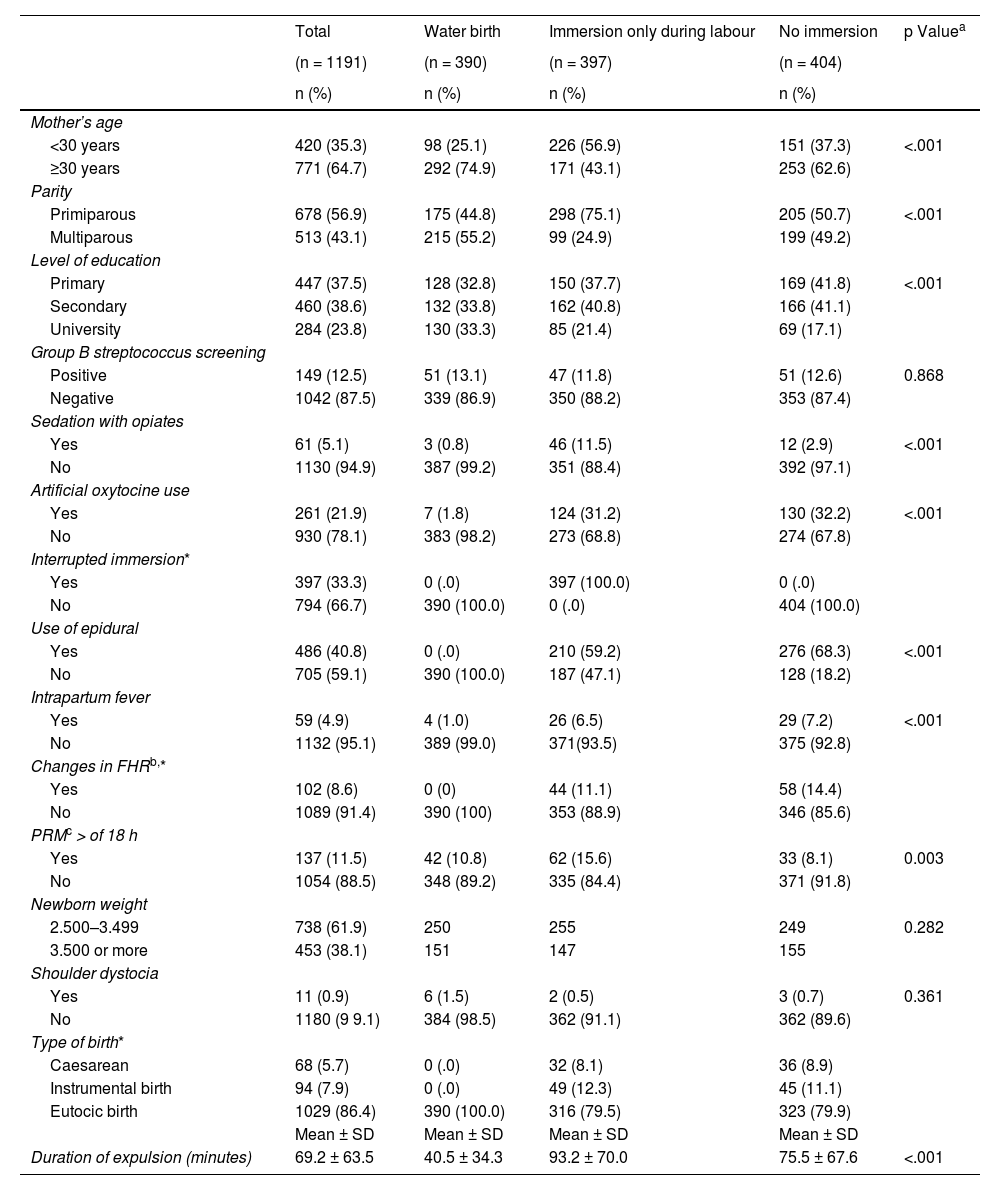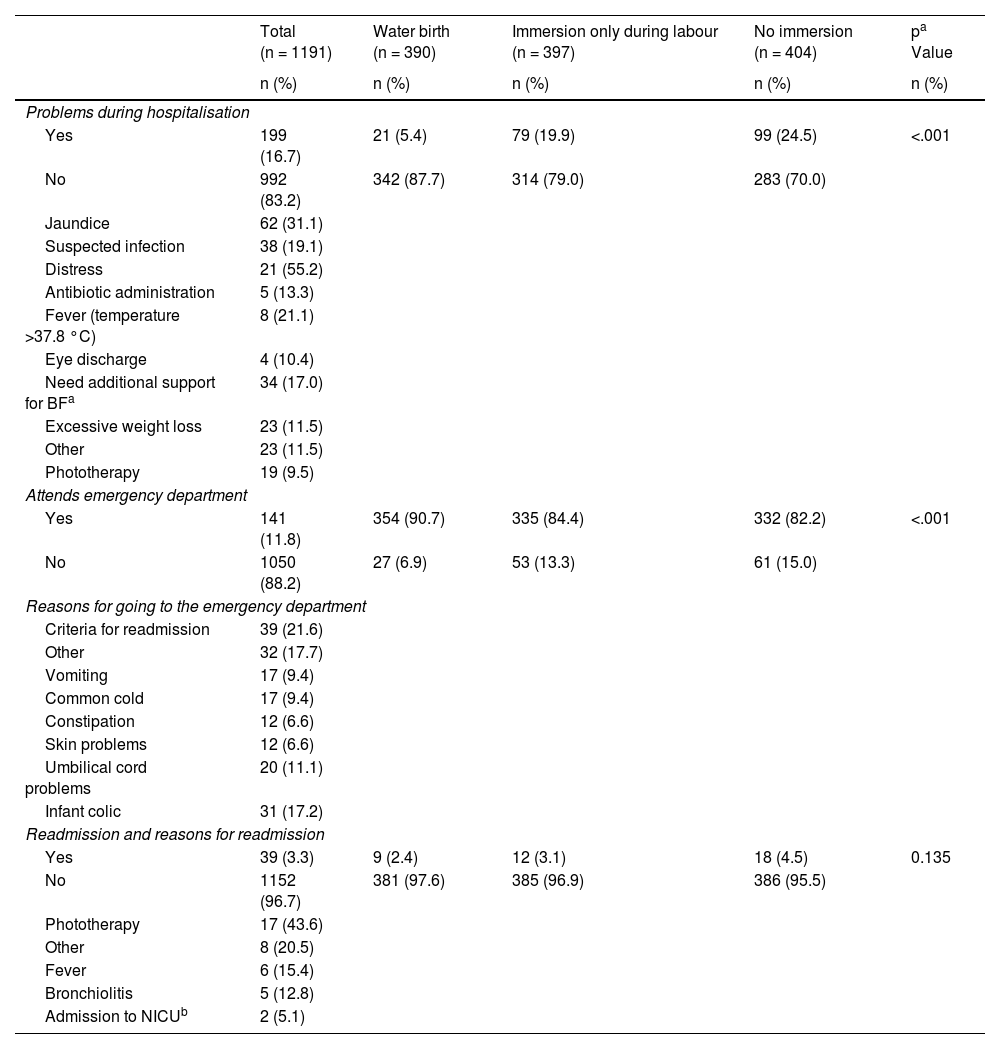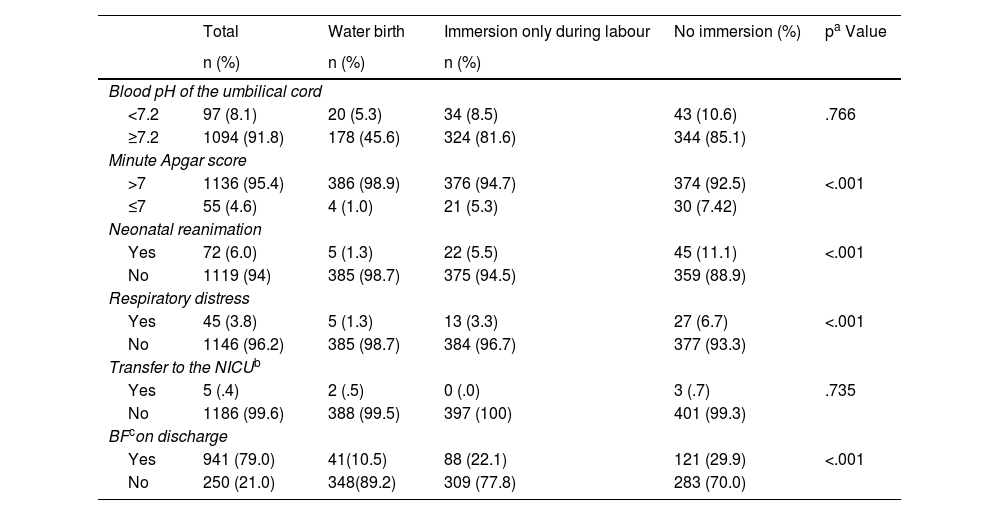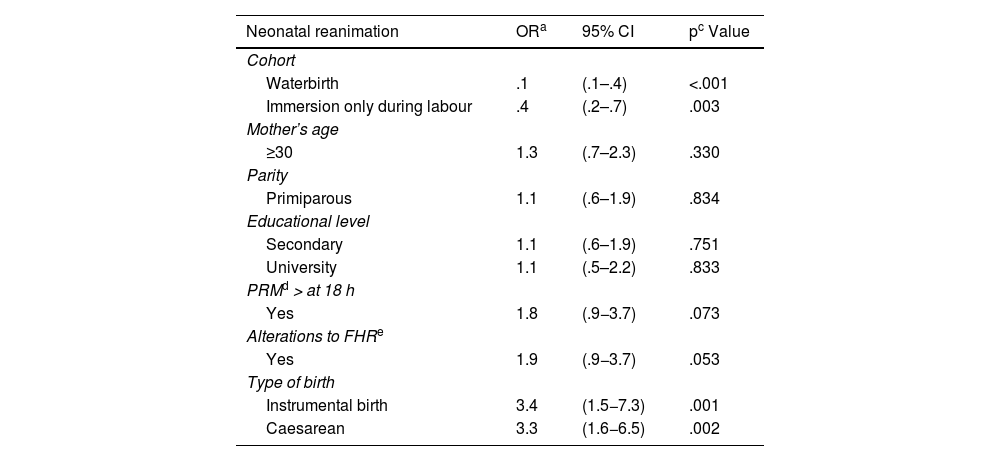To compare neonatal outcomes between water births, births with immersion only during labour, and births in which immersion was never used.
MethodsA retrospective cohort study was performed including mother-baby dyads attended between 2009 and 2019 at the Hospital do Salnés regional hospital (Pontevedra, Spain). These women were categorised into 3 groups: water birth; immersion only during dilation; and women who never used immersion. Several sociodemographic-obstetric variables were studied and the main outcome was the admission of the neonate to the intensive care unit (NICU). Permission was obtained from the responsible provincial ethics committee. Descriptive statistics were used and between-group comparisons were performed using variance for continuous variables and chi-square for categorical variables. Multivariate analysis was performed with backward stepwise logistic regression and incidence risk ratios with 95%CI were calculated for each independent variable. Data were analysed using IBM SPSS® statistical software.
ResultsA total of 1191 cases were included. 404 births without immersions; 397 immersions only during the first stage of labor; and 390 waterbirths were included. No differences were found in the need to transfer new-borns to a NICU (p = .735). In the waterbirth cohort, neonatal resuscitation (p < .001, OR: 0,1), as well as respiratory distress (p = .005, OR: 0,2) or neonatal problems during admission (p < .001, OR: 0,2), were lower. In the immersion only during labor cohort, less neonatal resuscitation (p = .003; OR: 0,4) and respiratory distress (p = .019; OR: 0,4) were found. The probability of not breastfeeding upon discharge was higher for the land birth cohort (p < .001, OR: 0,4).
ConclusionsThe results of this study indicated that water birth did not influence the need for NICU admission, but was associated with fewer adverse neonatal outcomes, such as resuscitation, respiratory distress, or problems during admission.
Comparar los resultados neonatales entre los partos en agua, los partos con inmersión solo durante la dilatación, y los partos en los que nunca se usó inmersión.
MétodosSe realizó un estudio de cohortes retrospectivo donde se incluyeron las díadas madre-bebé atendidas entre 2009 y 2019 en el Hospital comarcal do Salnés (Pontevedra, España). Estas mujeres fueron categorizadas en tres grupos: parto en agua, inmersión solo durante la dilatación, y mujeres que nunca usaron inmersión. Se estudiaron diversas variables sociodemográficas-obstétricas y como resultado principal se consideró el ingreso del neonato en la Unidad de Cuidados Intensivos Neonatales (UCIN). Se obtuvo autorización del Comité de Ética provincial responsable. Se utilizó estadística descriptiva y las comparaciones entre grupos se realizaron con la varianza para las variables continuas, y χ2 para las variables categóricas. Se realizó un análisis multivariable con regresión logística por pasos hacia atrás y se calcularon los cocientes de riesgo de incidencia con intervalo de confianza de 95% (IC 95%) para cada variable independiente. Los datos fueron analizados mediante el programa estadístico IBM SPSS®.
ResultadosSe incluyeron un total de 1.191 casos; 404 nacimientos sin inmersión, 397 con inmersión solo durante la dilatación, y 390 partos en agua. No hubo diferencias en la necesidad de ingreso en UCIN (p = 0,735). En la cohorte de parto en agua, la reanimación neonatal (p < 0,001, odds ratio [OR]: 0,1, y el distrés respiratorio (p = 0,005 OR: 0,2) o los problemas durante el ingreso (p < 0,001, OR: 0,2), fueron menores. En el grupo de inmersión solo durante la dilatación hubo menos reanimación (p = 0,003; OR: 0,4) y menos distrés respiratorio (p = 0,019; OR: 0,4). La probabilidad de no recibir lactancia materna al alta fue mayor en los nacimientos sin inmersión (p < 0,001, OR: 0,4).
ConclusionesLos resultados de este estudio indicaron que el nacimiento en el agua no influyó en la necesidad de ingresar en una UCIN, pero se relacionó con menos resultados neonatales adversos, como reanimación, distrés respiratorio, o problemas durante el ingreso.










